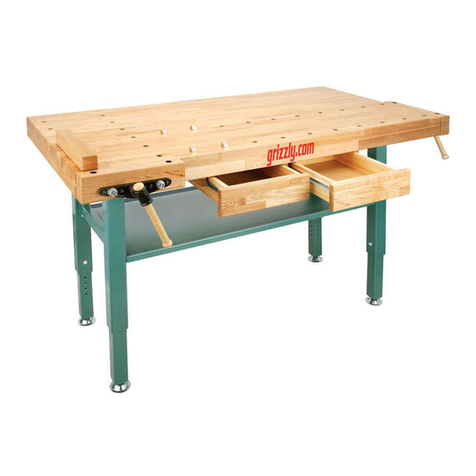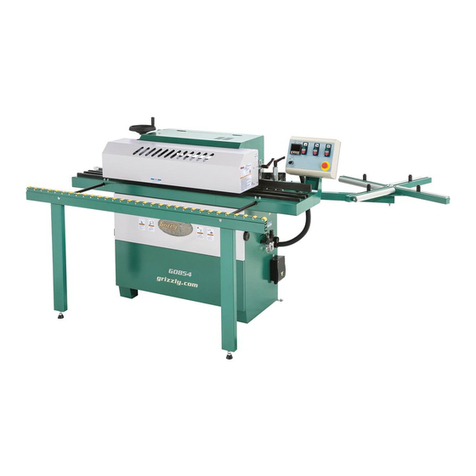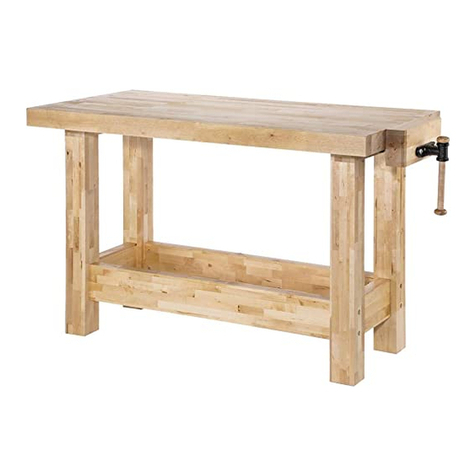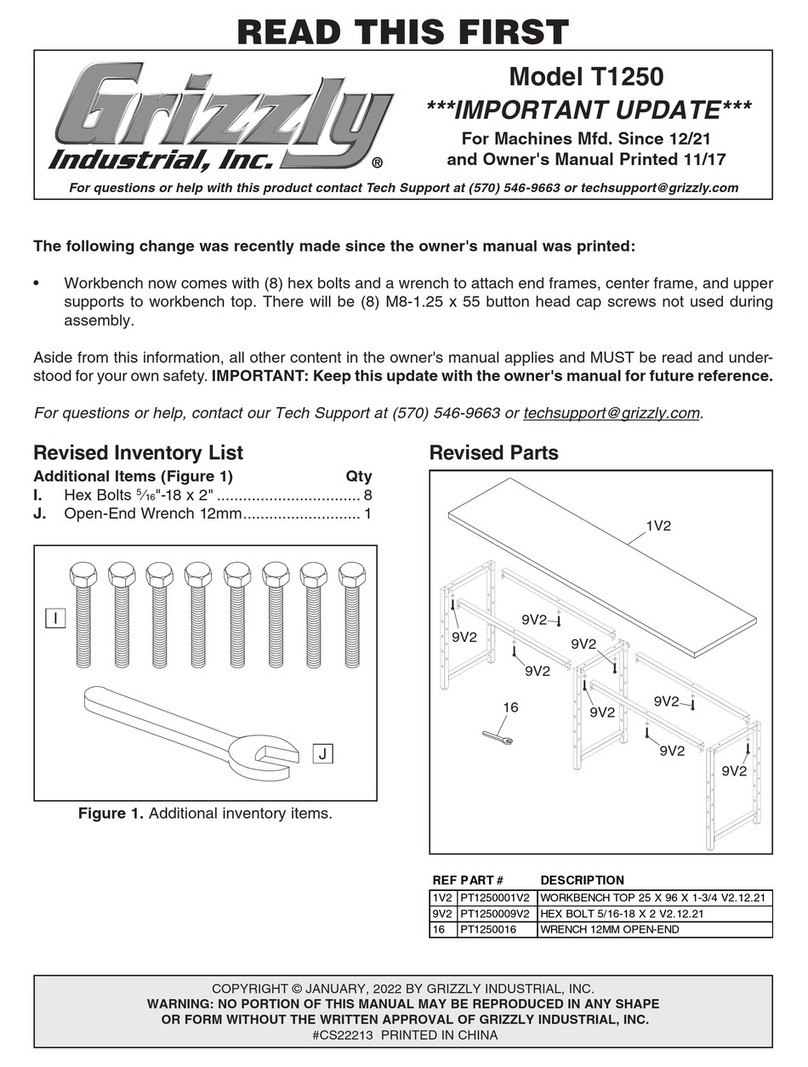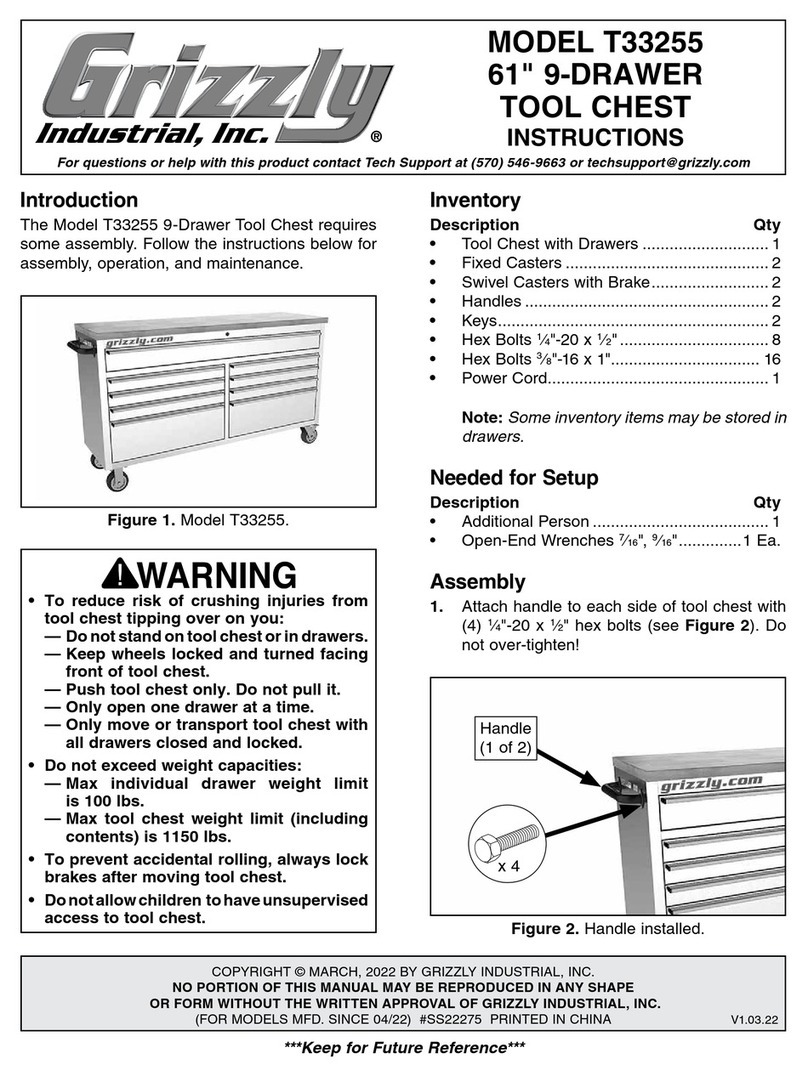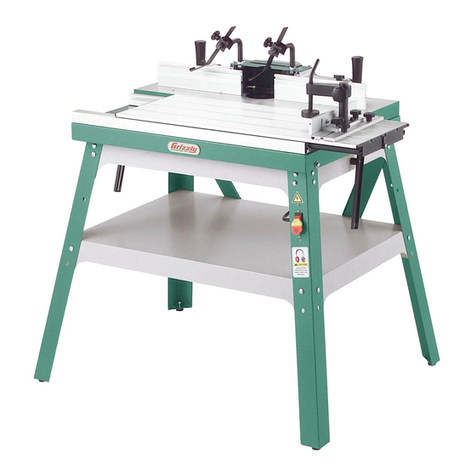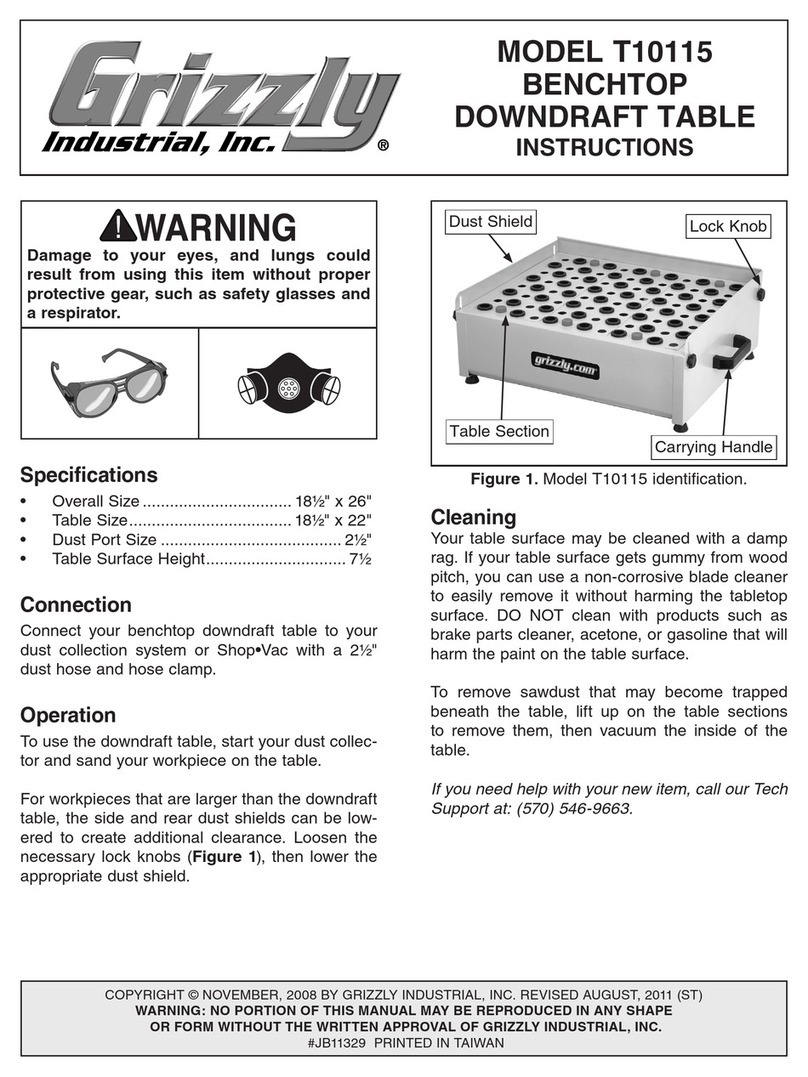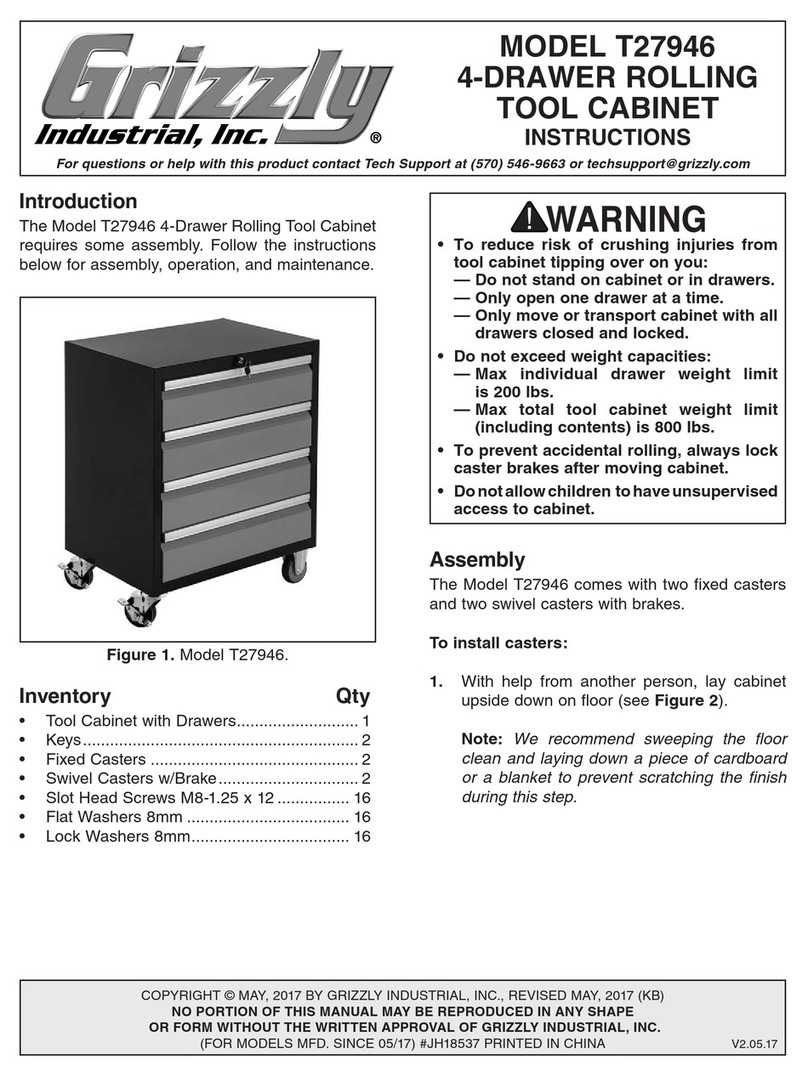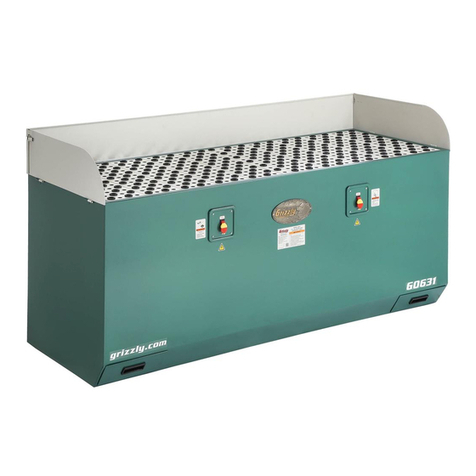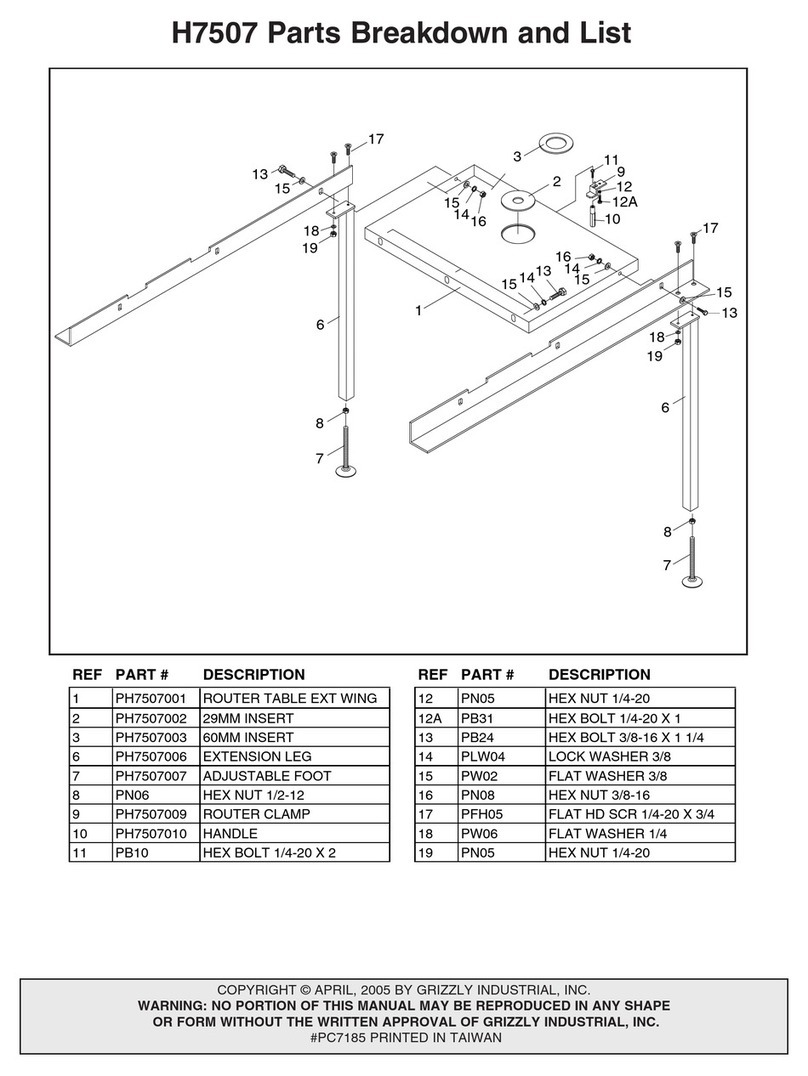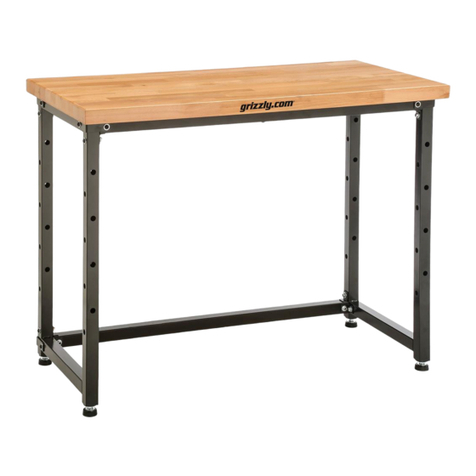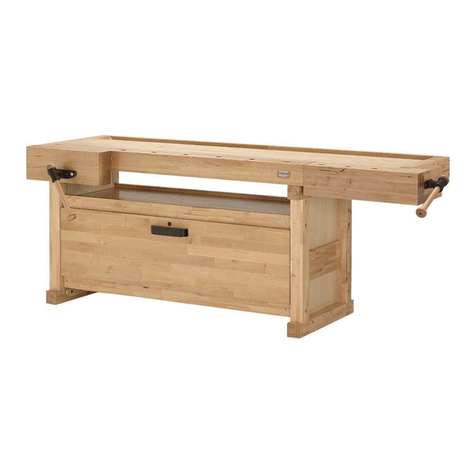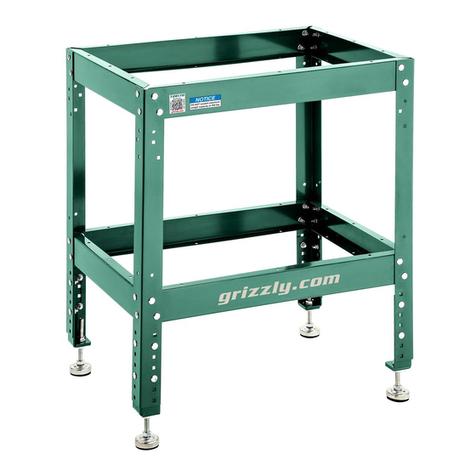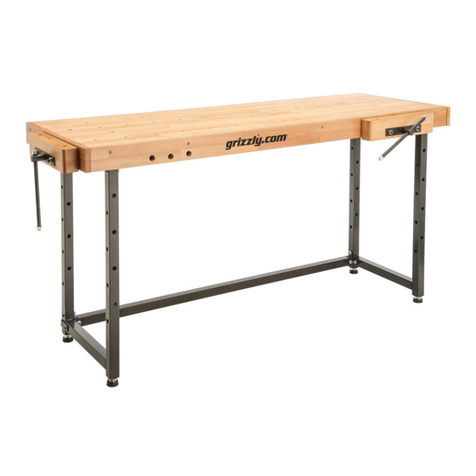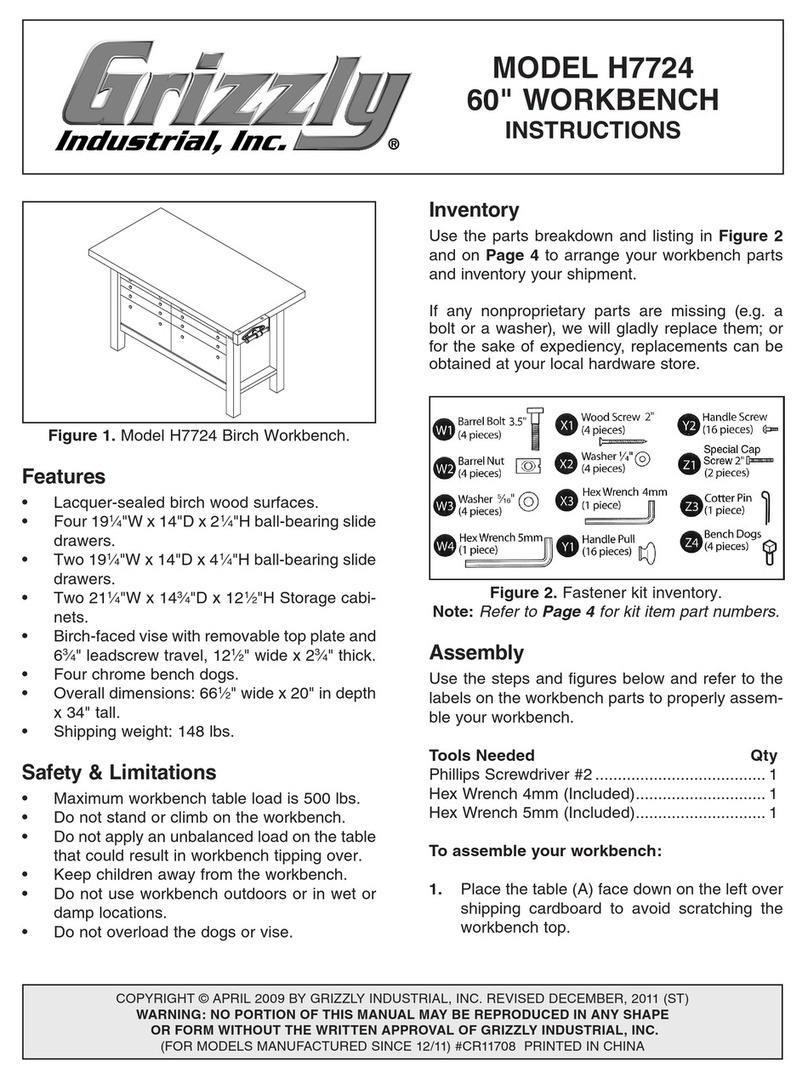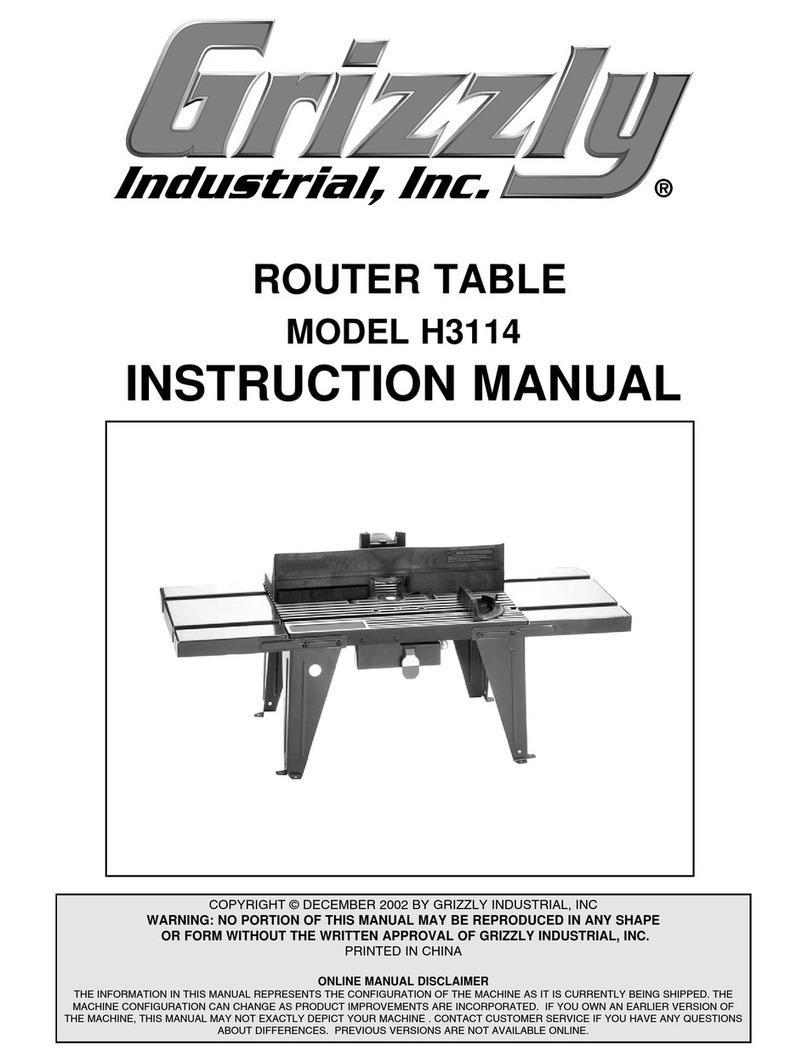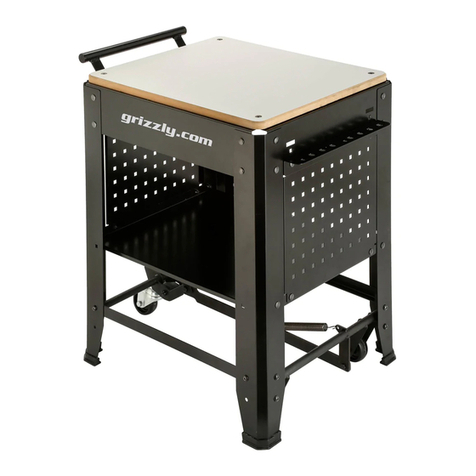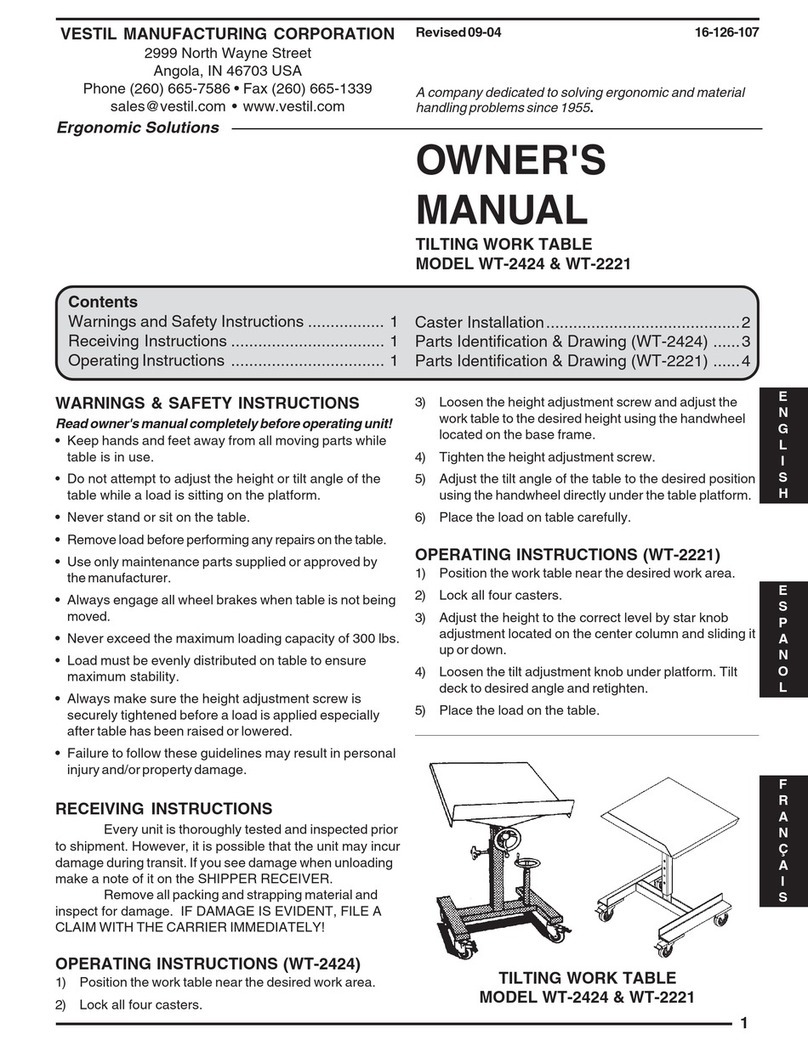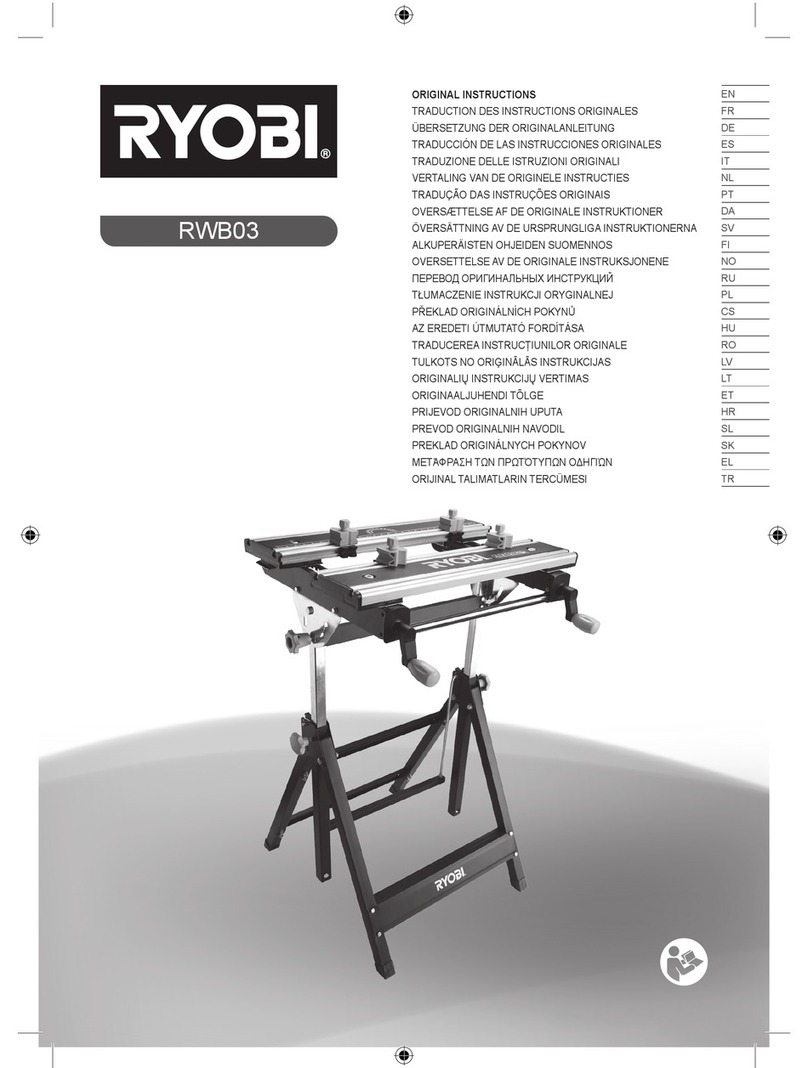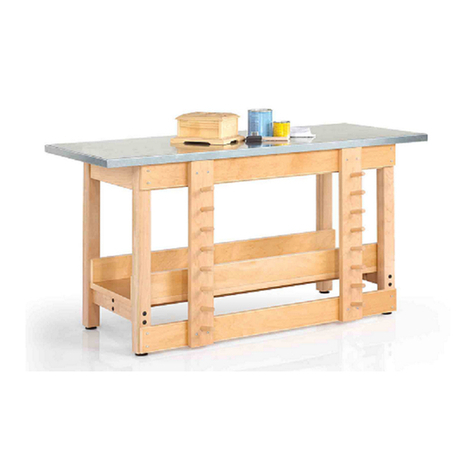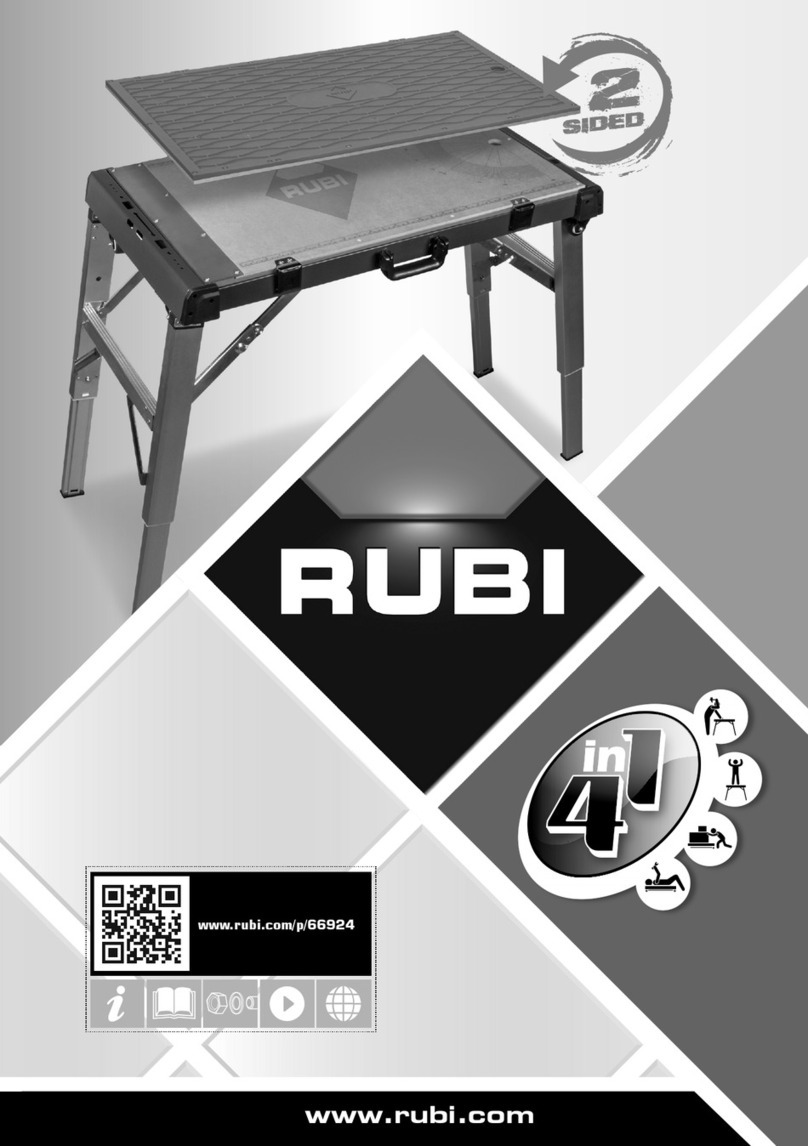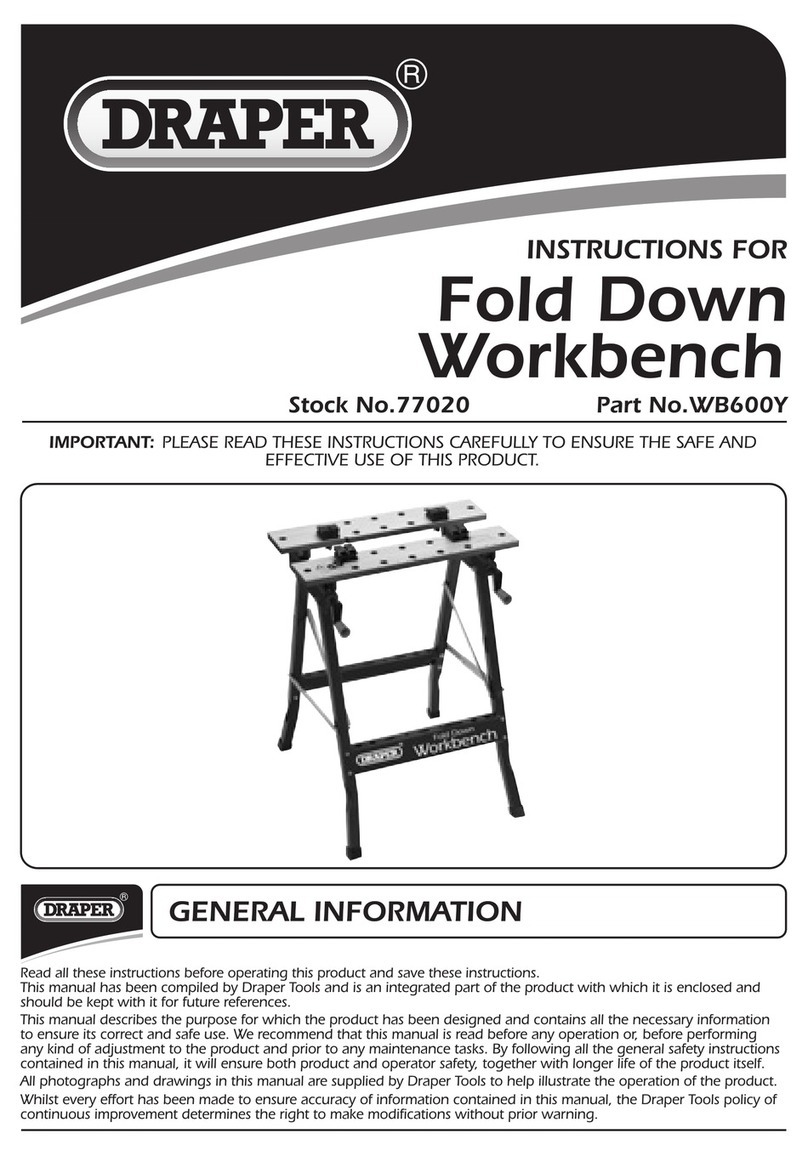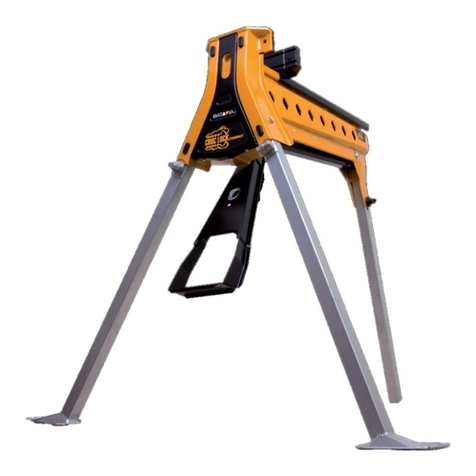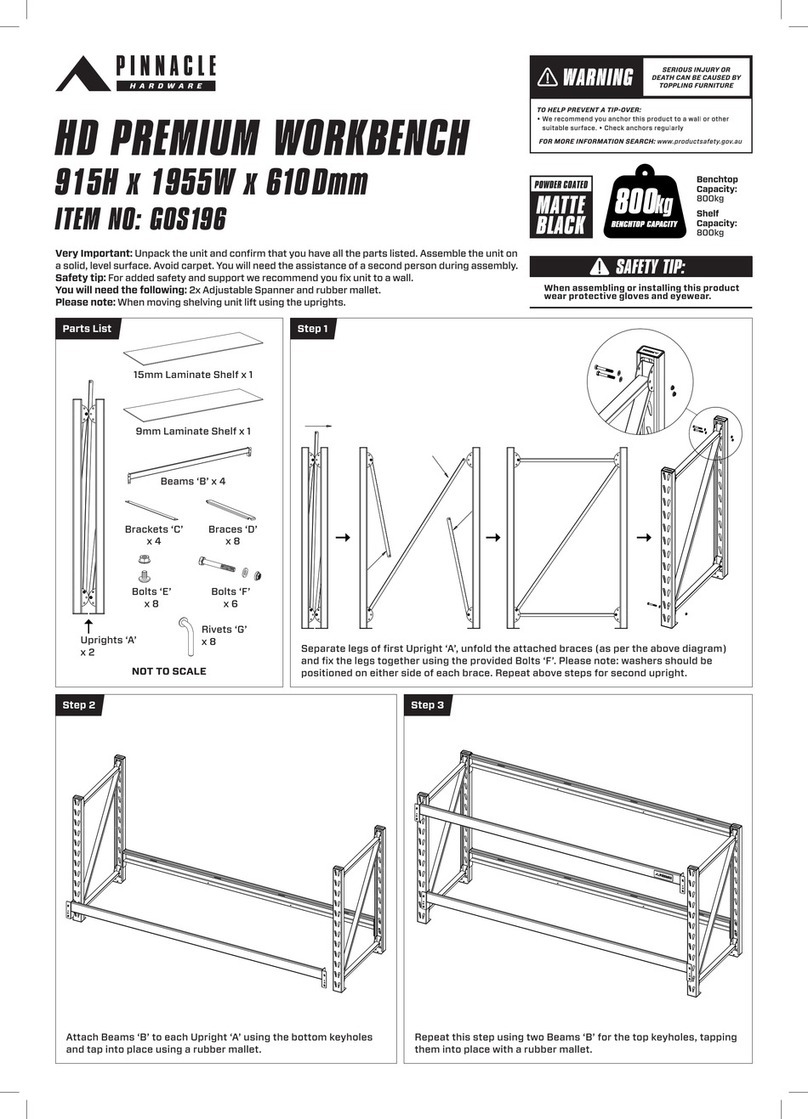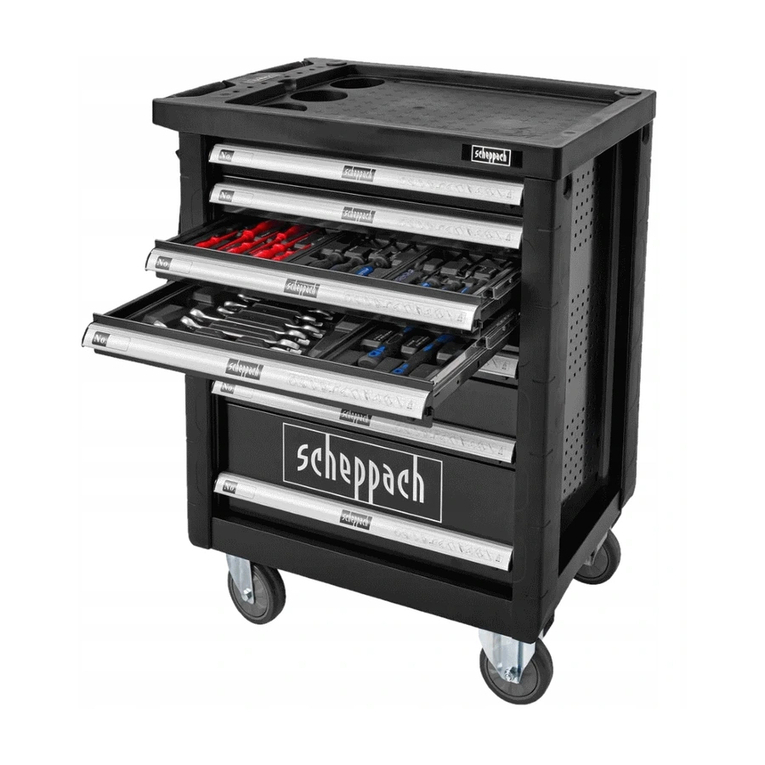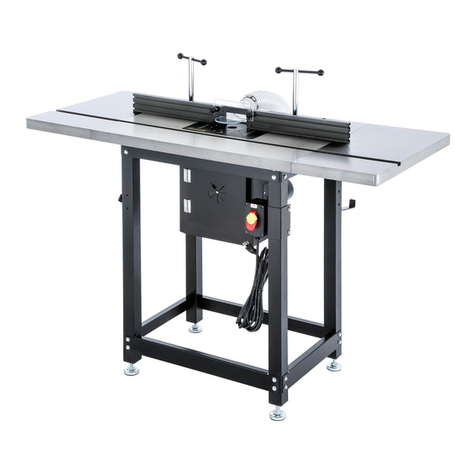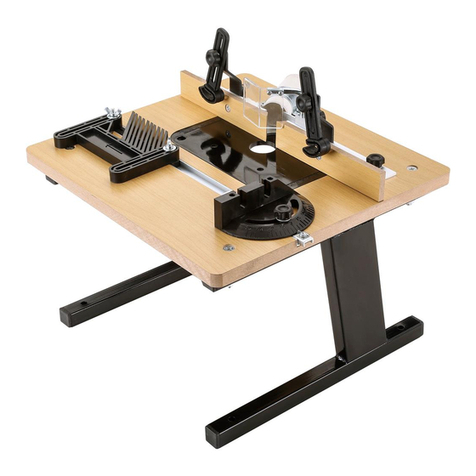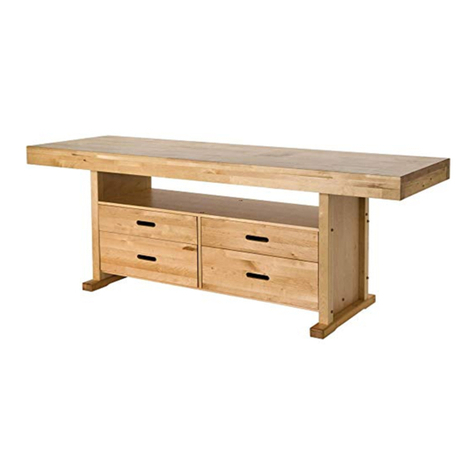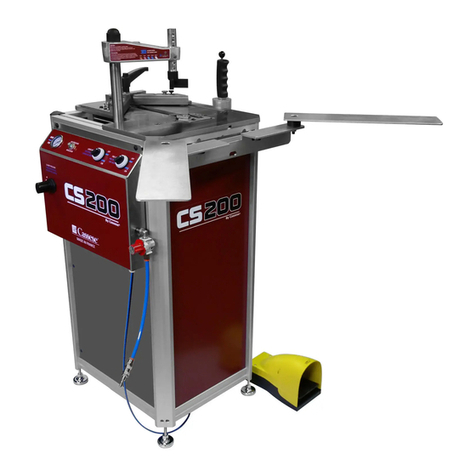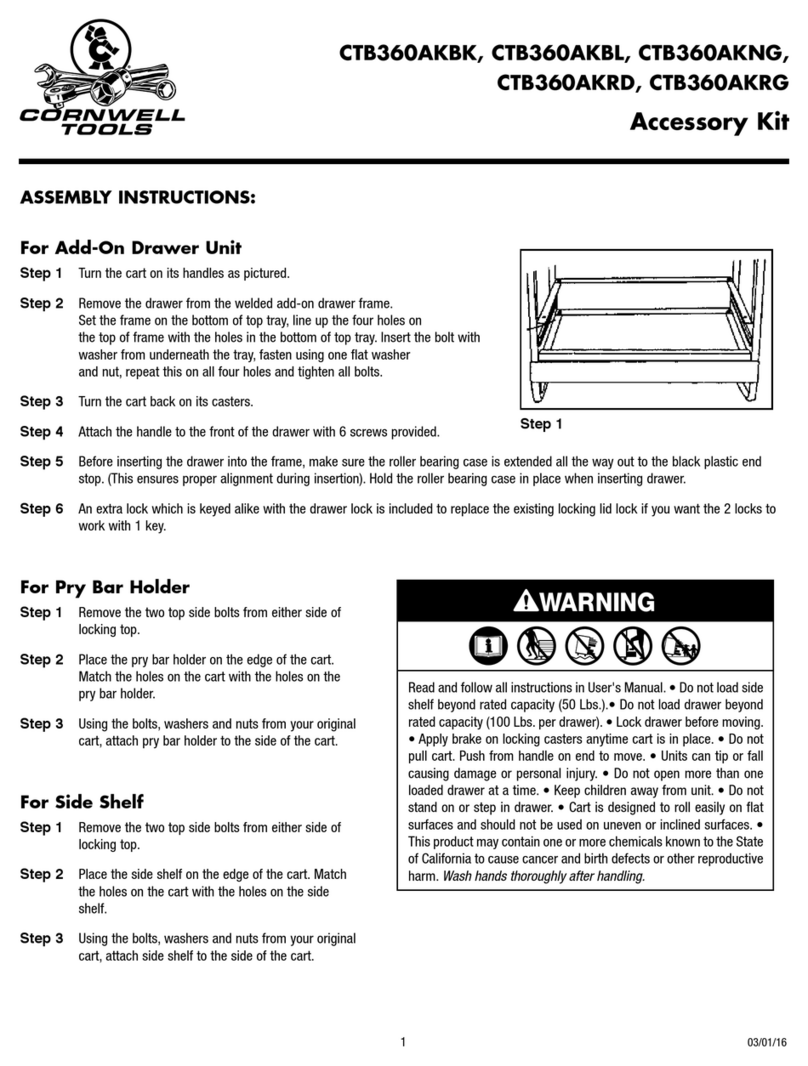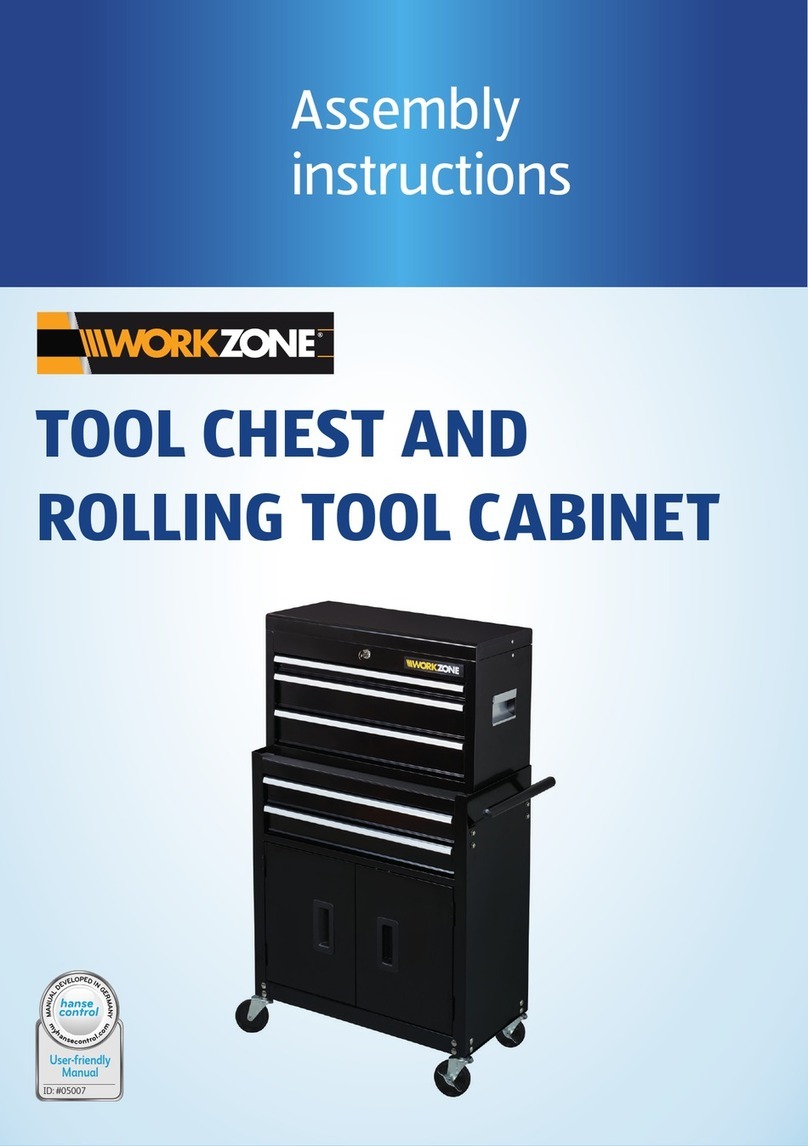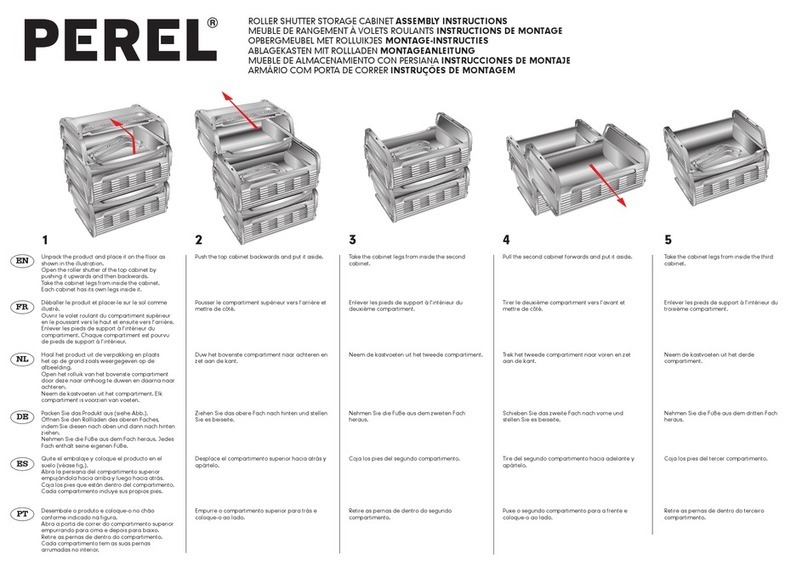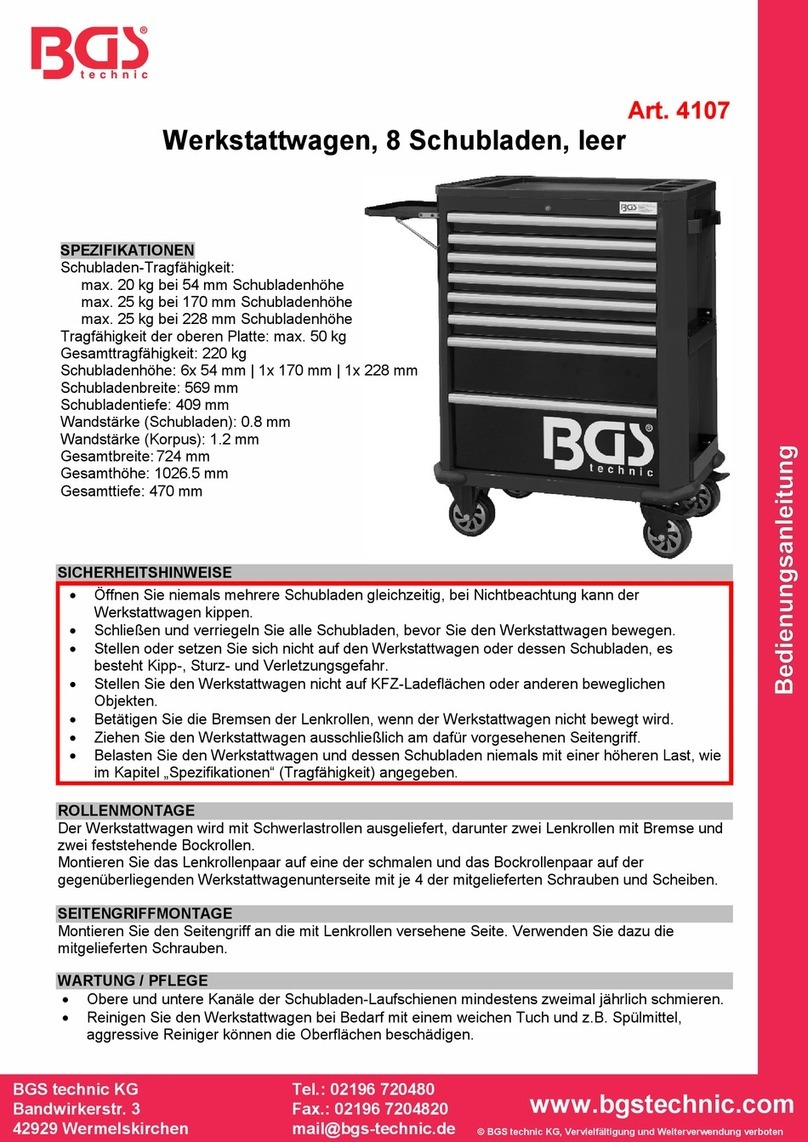
-8- Model G0888 (Mfd. Since 01/19)
Additional Safety for Metal Dust Collectors
Long-term respiratory damage, metal toxicity, cancer, or birth defects can occur from
improperly using, setting up, servicing, or using bench grinders without wearing a respirator.
Explosions or fire can result if machine is used to capture incorrect materials or if dust/waste
material is exposed to an ignition source. To reduce these risks, operator and bystanders MUST
completely heed the warnings below.
TOXIC METALS. Exposure (or over-exposure) to
certain types of metal dusts or fumes can result
in serious, potentially deadly health effects. To
reduce this risk, research toxicity of metal types
you work with and always seek to minimize/elimi-
nate exposure to yourself and others.
CLEANING DRAWERS. Wear safety goggles
and a NIOSH-approved respirator (rated for the
metal type) when emptying and cleaning col-
lection drawer and dust tray. Empty only into an
approved, closed-top metal container, taking care
to minimize amount of dust allowed to become
airborne. Prevent spread of dust onto hands or
clothing. Dispose of waste properly and according
to local regulations for material type.
HIGH-HAZARD MATERIAL. This machine does
NOT protect against highly hazardous materials,
such as lead dust, asbestos fibers, or radioactive
particles. These materials MUST be collected
with special filtration equipment because of their
high health/contamination hazard and difficulty of
filtration. DO NOT attempt to collect such materi-
als with this machine.
SAFE OPERATING LOCATION. DO NOT place
metal dust collector where it can be exposed to
rain or moisture. Exposure to water creates a
shock hazard and will reduce life of machine.
PROPERLY MAINTAIN MACHINE. Ke e p machine
in proper working condition to help ensure all
guards and components function as intended.
Perform routine inspections and all necessary
maintenance indicated in owner’s manual. Never
operate machine with damaged or worn parts.
Duct must be disconnected before service. Never
operate machine with filters or covers removed.
USE FOR INTENDED PURPOSE. This metal
dust collector is only designed to capture non-
combustible or non-explosible metal particles.
Collect only one type of metal/material at one
time. DO NOT use to capture materials made
from wood or wood products. DO NOT use it to
collect lead, magnesium, niobium, tantalum, tita-
nium, zirconium, hafnium, asbestos, crystalline
silica, gypsum, or any other non-metal products.
DO NOT use to capture welding fumes, gasses,
vapors, liquids, smoke, or ordinary combustible
materials. DO NOT connect this dust collector to
any machine using a coolant system.
WEAR PROPER PPE. Dust created from cutting,
grinding, sanding, etc. may cause cancer, birth
defects, or long-term respiratory damage. Be
aware of the dust hazards, exposure limits, and
toxicity associated with each type of workpiece
material being collected. Very fine dust/particles
may not be captured by filters and may become
airborne in the work area. Anyone working in this
same work area MUST wear a NIOSH-approved
respirator and eye protection rated for the work-
piece material.
RISK OF FIRE/EXPLOSIONS. To minimize static
electrical charge, only connect with smooth-
walled, sheet-metal ducting—do not use PVC.
Entire collection system (collector + ductwork)
must be bonded and grounded. Fine metal dust
particles can ignite, depending on material type
and circumstances. Know about and be prepared
to safely fight a combustible metal fire by conduct-
ing a combustible screening test under Chapter
4 of NFPA 484. Keep machine away from pilot
lights, open flames, or other ignition sources.
NEVER use near chemical fumes or within an
enclosed spray booth.
